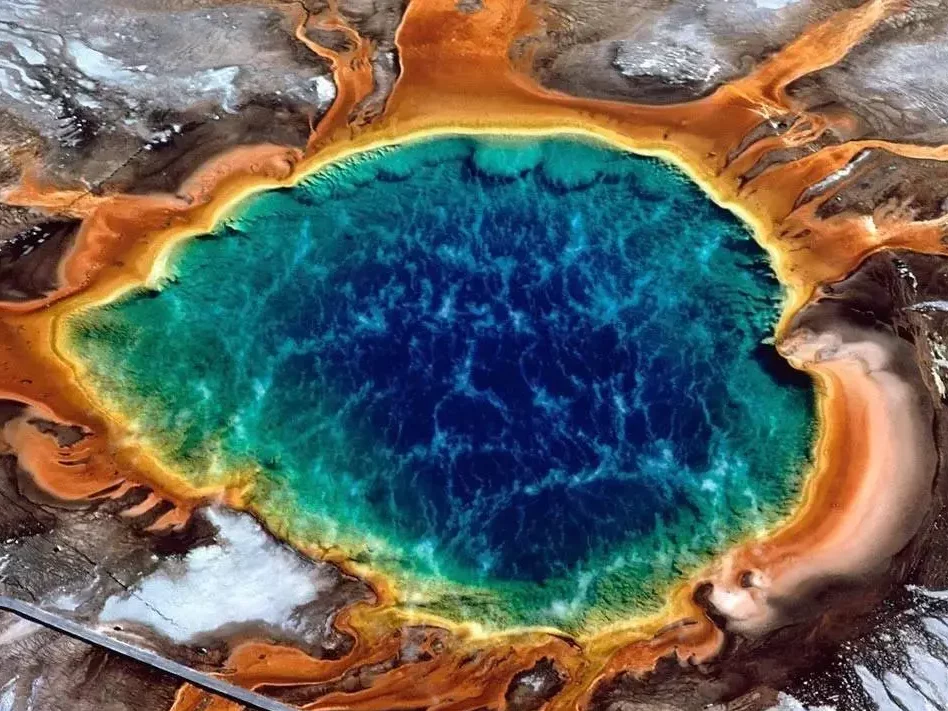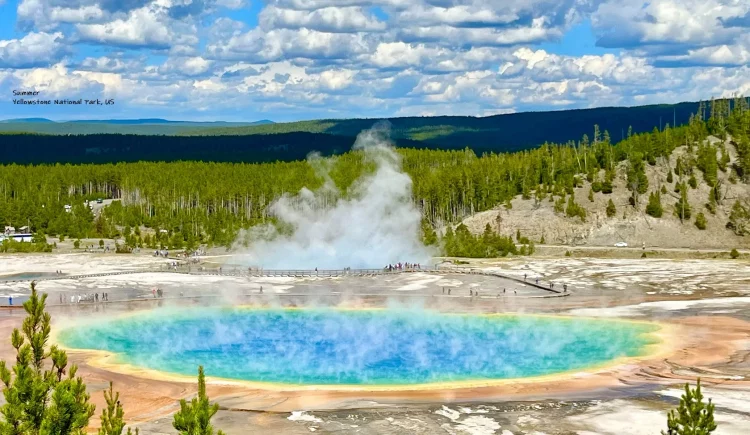Yellowstone National Park, with its unparalleled natural beauty and diversity, draws millions of visitors annually. However, the park’s vast expanse—over 2.2 million acres—can be overwhelming for first-time visitors. From geothermal marvels to lush valleys teeming with wildlife, Yellowstone offers countless experiences that can make planning your trip both exciting and challenging. To help you make the most of your visit, this guide provides essential travel tips, covering everything from itineraries and accommodations to safety and sustainability.
1. Planning Your Trip: Best Times to Visit
Yellowstone is a year-round destination, but each season offers a unique experience. Understanding what to expect during different times of the year can help you decide when to visit.
Spring (April–May)
- Advantages: Wildlife is abundant, as animals emerge from hibernation. Melting snow creates roaring waterfalls.
- Challenges: Some roads and facilities may still be closed due to snow. Weather can be unpredictable.
- What to Pack: Layered clothing for variable temperatures, waterproof gear, and sturdy hiking boots.
Summer (June–August)
- Advantages: All park facilities are open, and the weather is warm. Ideal for hiking and camping.
- Challenges: The park is at its busiest, leading to crowded attractions and full accommodations.
- What to Pack: Sun protection, insect repellent, and plenty of water for long hikes.
Fall (September–October)
- Advantages: Cooler weather, fewer crowds, and stunning autumn foliage. Elk rutting season provides unique wildlife viewing opportunities.
- Challenges: Some facilities begin to close by mid-October. Nights can be cold.
- What to Pack: Warm layers, binoculars for wildlife spotting, and a good camera for fall colors.
Winter (November–March)
- Advantages: A serene, snow-covered landscape and opportunities for cross-country skiing, snowshoeing, and wildlife tracking.
- Challenges: Limited road access and closed facilities. Extreme cold temperatures.
- What to Pack: Thermal clothing, snow boots, and winter sports gear.
2. Choosing Where to Stay
Yellowstone offers a range of accommodation options, from campgrounds to historic lodges. Deciding where to stay depends on your budget, preferences, and itinerary.
Lodges and Hotels Inside the Park
- Advantages: Staying inside the park allows you to access popular attractions early in the morning or late in the evening, avoiding crowds.
- Options: Old Faithful Inn, Mammoth Hot Springs Hotel, Lake Yellowstone Hotel, and Canyon Lodge.
- Booking Tips: Reservations can fill up a year in advance, so plan early.
Campgrounds
- Advantages: A budget-friendly and immersive way to experience Yellowstone.
- Popular Campgrounds: Madison, Canyon, and Grant Village campgrounds.
- Booking Tips: Some campgrounds are first-come, first-served, while others require reservations.
Nearby Towns
- Options: West Yellowstone (MT), Gardiner (MT), Cooke City (MT), and Cody (WY).
- Advantages: More dining, shopping, and lodging options than inside the park.
3. Must-See Attractions and Activities
Yellowstone’s vastness means you’ll need to prioritize the sights and activities that appeal to you most.
Geothermal Features
- Old Faithful: Witness this iconic geyser’s predictable eruptions.
- Grand Prismatic Spring: Admire its vibrant colors from the Midway Geyser Basin or the nearby overlook trail.
- Norris Geyser Basin: The park’s hottest and most dynamic geothermal area.
Wildlife Watching
- Lamar Valley: Known as the “Serengeti of North America” for its abundance of animals, including bison, wolves, and bears.
- Hayden Valley: Another prime location for spotting wildlife, especially in the early morning or evening.
Scenic Drives
- Grand Loop Road: This 142-mile road connects the park’s main attractions.
- Beartooth Highway: A breathtaking route just outside the park’s northeast entrance.
Outdoor Activities
- Hiking: Trails range from short walks, like the Fairy Falls Trail, to challenging treks, like Mount Washburn.
- Boating: Explore Yellowstone Lake by kayak or motorboat.
- Fishing: Fly-fishing in the Yellowstone River is world-renowned, but permits are required.

4. Navigating the Park: Tips for Getting Around
Yellowstone’s road network is extensive but can be crowded during peak seasons.
Driving Tips
- Be Patient: Wildlife jams are common; allow extra time to reach your destination.
- Fill Your Tank: Gas stations inside the park are limited, so keep your tank full.
- Check Road Conditions: Roads may close due to weather, construction, or animal activity.
Alternative Transportation
- Shuttles and Tours: Guided tours and shuttles are available, offering convenience and expert insights.
- Cycling: Some areas of the park are accessible by bike, but be cautious of wildlife and steep terrain.
5. Safety Tips for Visitors
Yellowstone’s wilderness is stunning but can also be dangerous if you’re unprepared.
Wildlife Safety
- Maintain a distance of at least 100 yards from bears and wolves and 25 yards from other animals.
- Carry bear spray and know how to use it.
Geothermal Safety
- Stay on boardwalks and marked trails in geothermal areas to avoid dangerous ground.
Weather Preparedness
- Be prepared for sudden changes in weather, especially in mountainous areas.
6. Sustainable Travel Practices
Help preserve Yellowstone for future generations by practicing sustainable tourism.
- Leave No Trace: Pack out all trash, including biodegradable items.
- Stay on Trails: Protect fragile ecosystems by avoiding off-trail hiking.
- Use Refillable Water Bottles: Reduce plastic waste by bringing your own bottle.
7. Maximizing Your Experience
Plan an Itinerary
Divide the park into manageable sections to explore over multiple days. For example:
- Day 1: Old Faithful and the Upper Geyser Basin.
- Day 2: Grand Prismatic Spring and the Midway and Lower Geyser Basins.
- Day 3: Grand Canyon of the Yellowstone and Hayden Valley.
- Day 4: Lamar Valley and the Mammoth Hot Springs area.
Timing Matters
- Visit popular attractions early in the morning or late in the evening to avoid crowds.
- Wildlife is most active during dawn and dusk.
Take Guided Tours
Rangers and naturalists offer insights into Yellowstone’s geology, history, and ecology, enriching your visit.
Conclusion
A visit to Yellowstone National Park is a once-in-a-lifetime experience, offering unparalleled opportunities to connect with nature. By planning carefully, respecting the environment, and embracing the park’s wild beauty, you can make the most of your trip and create memories that last a lifetime. So, how can you make the most of your visit to Yellowstone? With preparation, mindfulness, and a sense of adventure, the wonders of Yellowstone are yours to explore.





















